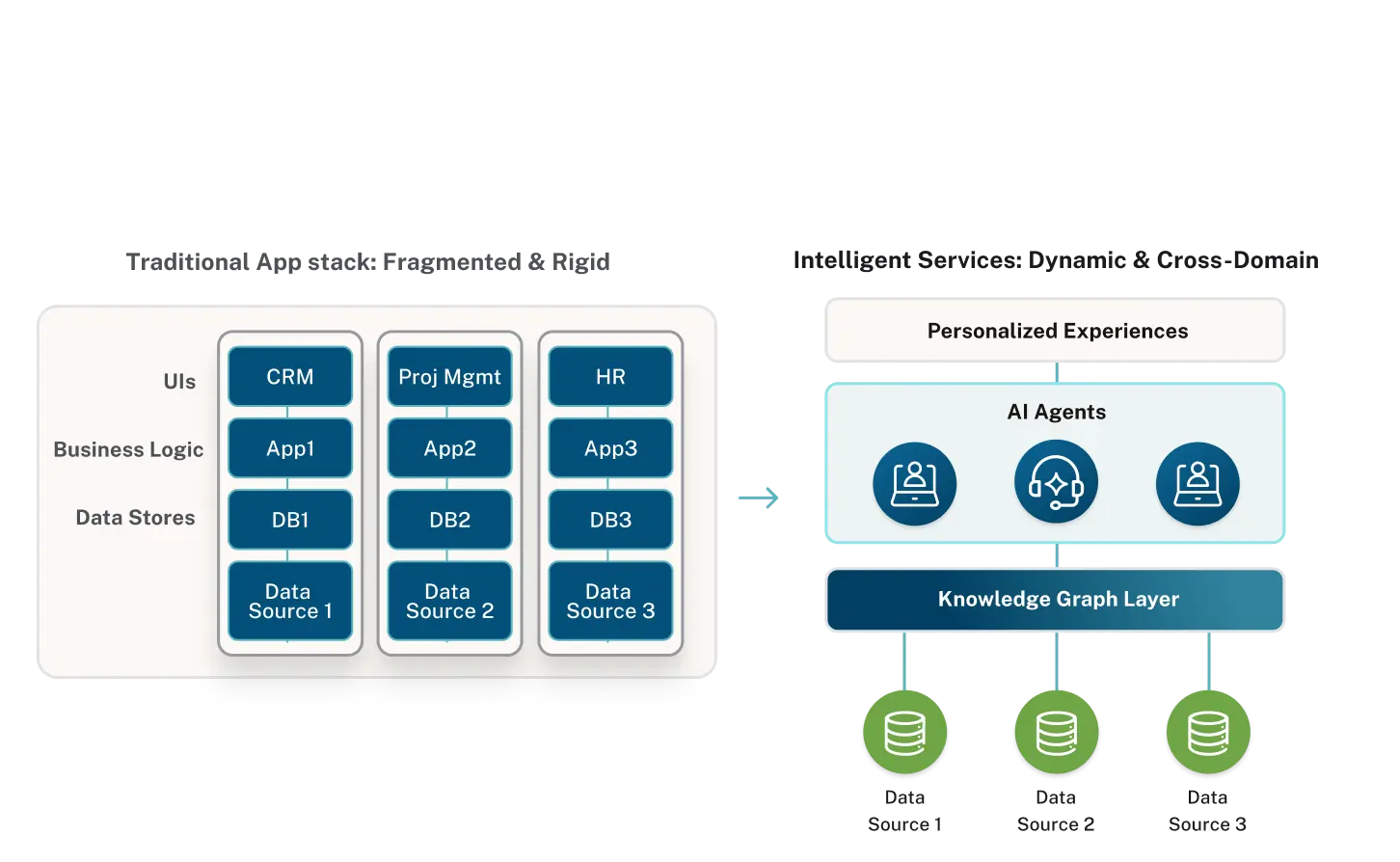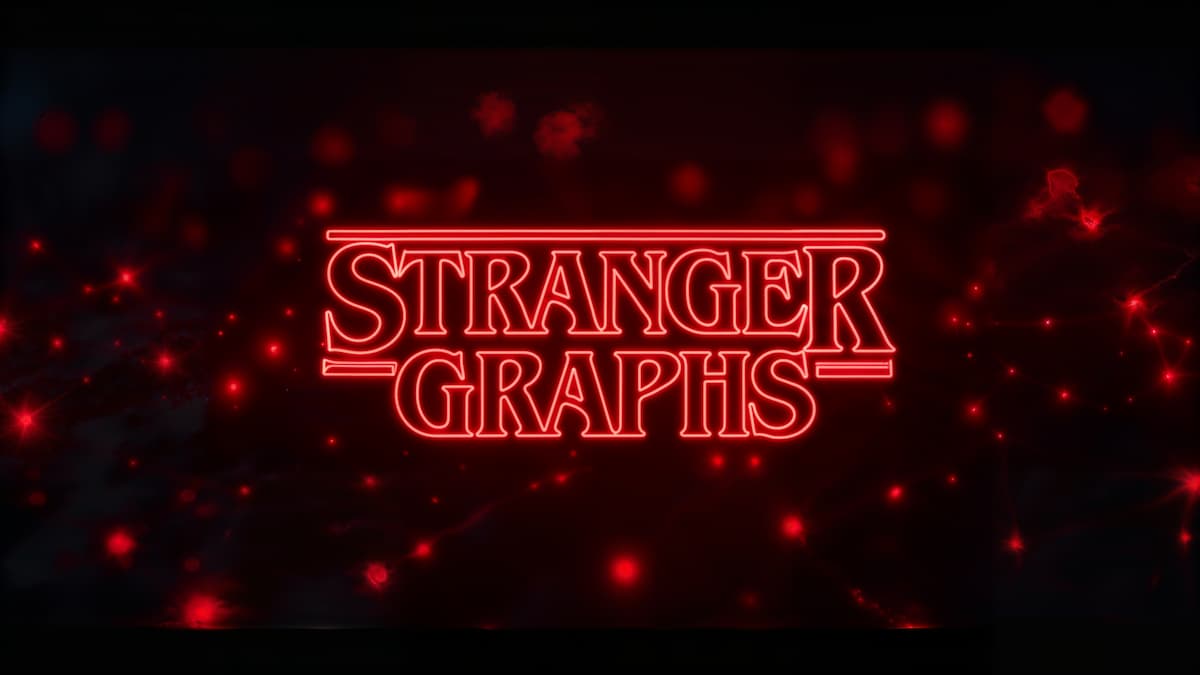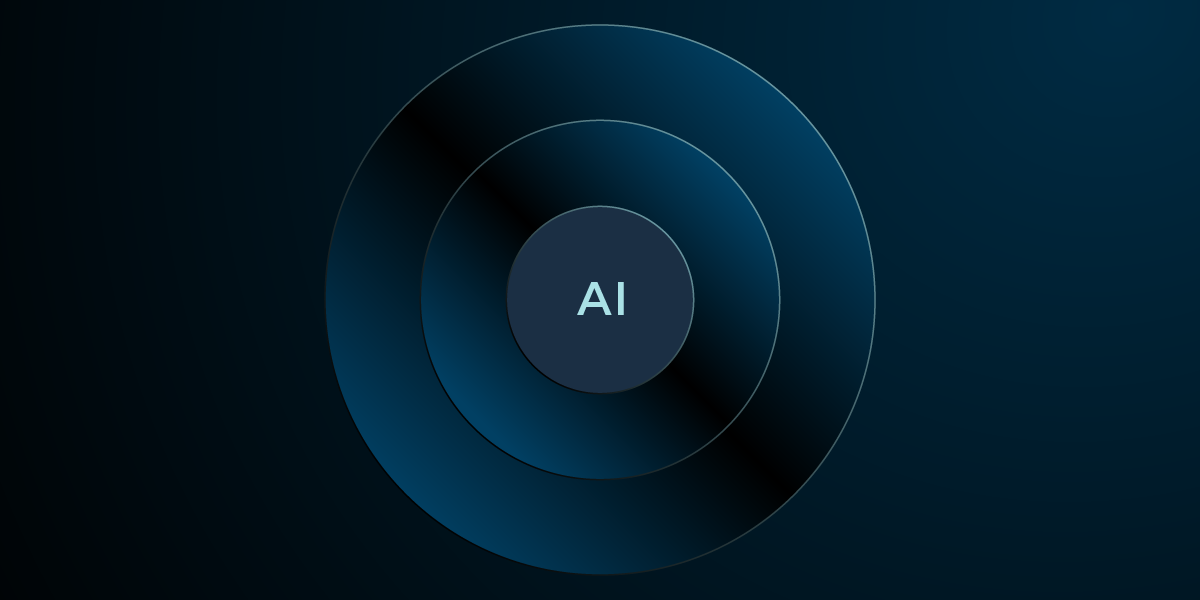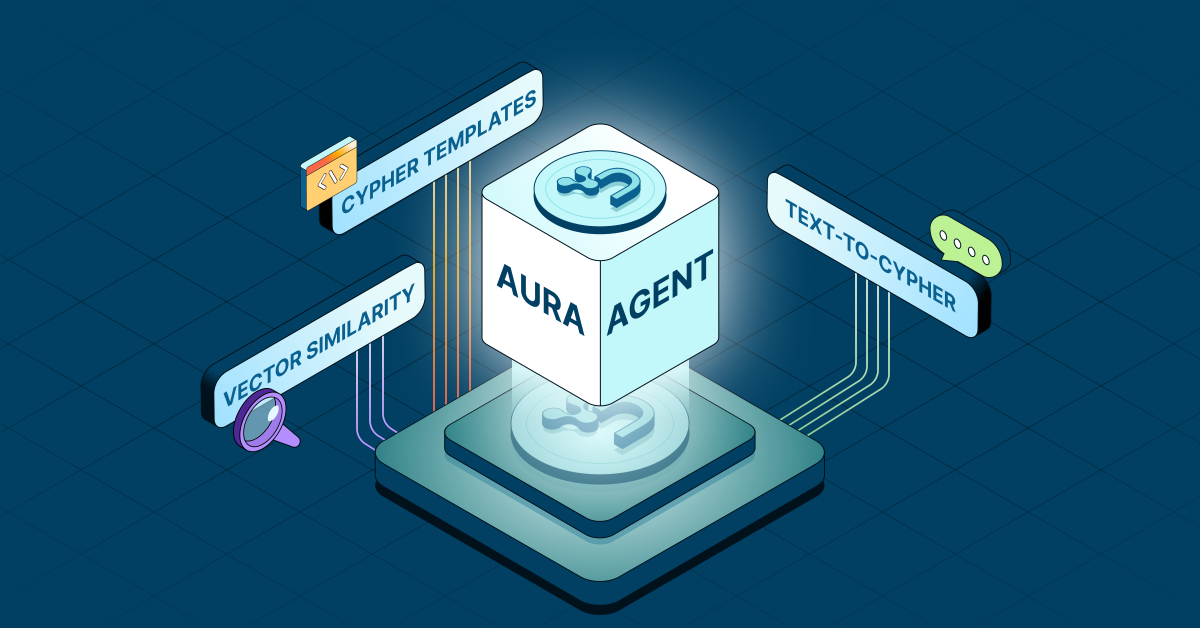Neo4j in 2024: Delivering on Our Vision of Cloud-First Graph Technology

Chief Product Officer, Neo4j
7 min read
When I joined Neo4j as Chief Product Officer in early 2023, we set an ambitious goal: build the industry’s most comprehensive cloud-native graph database and analytics offering. In 2024, we made significant progress in transforming that vision into reality, helping organizations uncover valuable hidden patterns in their connected data to drive innovation and growth.
We got here by focusing on four key priorities in 2024:

- Trusted Fundamentals: Advancing our core graph database capabilities for unprecedented performance, security, and scale
- Cloud First: Expanding our fully managed database offering Aura to deliver on our zero ops vision
- Ease of Use: Enhancing the developer experience with powerful new tools that deliver significant productivity improvements
- AI Accuracy: Accelerating AI innovation through GraphRAG
The results speak for themselves: breakthrough performance improvements enabled by our new block storage format, seamless integrations with all major cloud providers, innovative GraphRAG capabilities that are transforming how organizations build GenAI applications, and many more.
In this post, I’ll provide a comprehensive overview of our 2024 product innovations and preview what’s next as we continue to help organizations gain a deeper understanding of their connected data.
Advance Core Database Capabilities
In 2024, we delivered transformative improvements to our core database technology, significantly improving performance, scalability, and enterprise readiness. Our engineering teams focused on innovations that directly empower organizations to build mission-critical graph applications.
Parallel Runtime enhances performance for large analytical queries by efficiently using multiple CPU cores. Dividing the workload into multiple threads enables faster traversal of substantial portions of the graph, ensuring optimal use of available system resources and quicker query results.

Call in Transactions enables parallel writes with a Cypher-native way of splitting transactions into batches of rows, breaking those updates into multiple smaller transactions, each consuming less memory.

Change Data Capture (CDC) reached general availability, delivering production-ready capabilities for real-time change tracking through our transaction log architecture. Available in both full and differential capture modes and integrated with Apache Kafka and Confluent Cloud, CDC opens new possibilities for event-driven architectures.

Our new block storage format marks a key advance in graph-native storage architecture. By grouping related graph data into optimized blocks, we’ve dramatically reduced I/O operations and accelerated property access.

We’ve also significantly improved database connectivity and enhanced the development experience. Our Python driver now delivers up to 10x faster performance through Rust extensions, while our new JDBC driver Version 6 brings advanced enterprise features and SQL translation capabilities. This is also an excellent opportunity for partners looking to build integrations with SQL tooling.
Looking ahead, we are committed to providing seamless database compatibility across versions. We’re transforming how we deliver database improvements with a new approach to versioning that separates Cypher language updates from database releases, giving customers more control over how they adopt new features.
Expand Aura With More Enterprise Capabilities
Our cloud offerings reached new heights in 2024, with significant expansions of our capabilities and strategic partnerships. In 2024, we surpassed 25K active databases managed in our Aura offering, and we’re continuing to expand our global reach with a recent expansion of regions in India, now available across Azure, GCP, and AWS.
We enhanced AuraDB with new tiers, advanced security features, and improved scalability. We shipped many of the key security and observability features that our customers asked for, including fine-grained access control, Single Sign-On (SSO), Multi-Factor Authentication (MFA), encryption at rest and in transit, Customer Managed Keys (CMEK), Private Link, Security Log Forwarding, Advanced Metrics Integrations, SOC2 type 2 compliance, HIPAA, and various other compliance certifications.
We listened to our customers and delivered on two cost-saving capabilities. We introduced our new Free Trial for AuraDB Professional and a new tier, Business Critical, which provides enterprise features at a lower price.

We also enhanced our scalability in Aura by enabling larger instance types and up to 15 secondaries.

Aura now also offers instances optimized for Vector Search, featuring configurations that double vector capacity without compromising performance. This enables consistent, efficient vector search with larger datasets – even on smaller instances.

We’ve always maintained a multi-cloud presence, so teams in any ecosystem can focus on building applications instead of managing infrastructure. Still, last year, we significantly deepened our cloud partnerships and integrations. We were named Google Cloud Technology Partner of the Year in the Data Management category for the second consecutive year. We expanded this partnership through new integrations with Vertex AI and Gemini, making it easier for Google Cloud customers to enhance their GenAI applications with graph-powered context and reasoning.
We’ve also expanded our AWS partnership with new competencies across financial services, automotive, GenAI, and machine learning. Neo4j is now available on AWS Marketplace, Google Cloud Marketplace, and Microsoft Azure Marketplace, giving organizations the flexibility to deploy Neo4j on their preferred cloud platform while using existing cloud credits and billing arrangements.
Ease of Use for Developers
Ease of use is critical for our customers, and our vision is ambitious yet simple: We want developers to go from signup to success in record time. We’re creating what we call the “5-5-5” experience—5 seconds to sign up, 5 minutes to wow with your data, and 5 days to see real value. In 2024, we made significant strides toward this vision by unifying and simplifying the entire Neo4j development experience.
At the heart of this transformation is our new Aura Console, a unified hub that integrates Neo4j administration, modeling, and visualization capabilities. Aura Console enables teams to collaborate more effectively while maintaining secure access through expanded roles and controls. Developers can find everything they need in one single place.

We also launched new data import capabilities to improve developer productivity, beginning with support for relational databases. In 2025, we plan to expand support to include columnar databases, object stores, and SaaS applications.


To onboard new developers and improve productivity, we introduced co-pilot experiences, which allow developers to write and improve Cypher queries through natural language interaction.

We’ve introduced several critical capabilities for API-first developers. Our Query API enables simple database access over HTTPS, while the new Aura CLI brings powerful command-line management capabilities for AuraDB instances. Developers can now use the official Neo4j extension for Visual Studio Code to develop apps with their Neo4j databases. We’ve also shared our roadmap for the Neo4j GraphQL Library, underlining our commitment to making graph APIs more powerful and easier to build. We launched Needle StarterKit 2.0, providing ready-to-use templates and components that accelerate application development across different industries and use cases.
We are also expanding our reach to new customers by taking Graph Analytics to various platforms. Our collaboration with Microsoft brought Neo4j capabilities into the Microsoft Fabric analytics platform and Azure OpenAI Service. Our Databricks connector has been validated as a partner solution for seamless integration for enhanced analytics and faster GenAI development. However, I’m most excited about our integration with Snowflake AI Data Cloud. You can now use our Graph Analytics capabilities, which include almost 50+ algorithms, directly from Snowflake using SQL—just three lines of SQL.

Accelerate AI Innovation
2024 saw GraphRAG emerge as a critical tool for overcoming the limitations of LLMs and accelerating GenAI application development. Combining knowledge graphs and retrieval-augmented generation (RAG), GraphRAG dramatically improves the reliability and accuracy of GenAI responses. Its rapid adoption throughout 2024 earned recognition in Gartner’s Emerging Tech Impact Radar: Artificial Intelligence (December 2024), where analysts identified it as a “high impact” technology for its ability to “significantly improve the contextual relevance and accuracy of GenAI applications.”
Building on this momentum, we delivered a comprehensive suite of tools to help organizations implement GraphRAG, including a GraphRAG Python package, LangChain-neo4j partner package, LLM Graph Builder, an open source Text2Cypher model, and many other GraphRAG ecosystem tools. All of these make it easier to create knowledge graphs, retrieve data from knowledge graphs, and build GraphRAG applications.
Our GraphRAG Python package empowers developers with advanced functions to build knowledge graphs from unstructured data and implement multiple GraphRAG retrieval strategies – boosting relevance, accuracy, and explainability in GenAI applications.
LangChain, an open-source framework used by millions worldwide, partners with Neo4j to officially offer advanced GraphRAG capabilities through the langchain-neo4j package
The LLM Knowledge Graph Builder has been an invaluable tool for showing the art of what’s possible, seamlessly transforming unstructured data—from text to YouTube videos—into knowledge graphs, providing a magical text-to-graph experience. It is so simple to use.

Due to popular demand for natural language interfaces to knowledge graphs, we released an open source fine-tuned Text2Cypher model, empowering developers to translate natural language questions into Cypher queries. We have also incorporated intuitive Copilot experiences in our Bloom and Query products to improve productivity via interactive graph exploration from natural language.
More broadly, we’ve created a dedicated page for all GraphRAG ecosystem resources. Bookmark it and check back periodically to stay updated on the latest Neo4j GenAI integrations, relevant GraphAcademy courses, and more.
Committing to a Future of Innovation and Growth
As we begin 2025, we’re energized by our progress and committed to pushing the boundaries of what’s possible with graph technology to deliver on our vision. We’ll keep expanding our cloud offering, focusing on making our platform more flexible and accessible. This includes new deployment options, enhanced scalability, and deeper integration with enterprise workflows.
The top 3 areas of our focus in 2025 will be:
- Scalability: Building the most scalable and distributed graph database solution in the market, enabling organizations to handle massive datasets with uncompromised performance.
- Ease of Use: Delivering on our vision for seamless workflows – from data ingestion to querying to visualization to dashboarding – in minutes, with built-in support for hundreds of data sources and automated data modeling.
- Agentic AI with GraphRAG: Using knowledge graphs as the foundation for AI agents that understand context, answer complex questions, and orchestrate actions through intuitive no-code/low-code interfaces.
The journey we began in 2023 continues to gain momentum, and we hope you’ll join us in shaping the future of graph technology.
Experience these innovations yourself — try Neo4j AuraDB today. Start free, scale as you grow, and join thousands of organizations already using graph technology to unlock deeper insights from their data.








